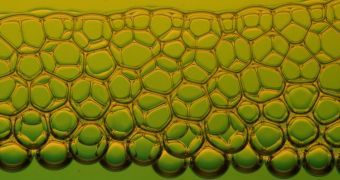Microgravity research conducted by experts at the European Space Agency (ESA) could finally enable research groups around the world to gain a deeper understanding of the nature of foams. The knowledge could benefit the food industry, as well as cooks trying to create complex dishes.
Getting a chocolate mousse right, for example, takes both art and science, in equal amounts. ESA is hoping to address these issues by conducting a series of microgravity experiments, using the Zero-G Airbus A-300 aircraft.
This airplane was specially modified for parabolic flights, which provide occupants with a few moments of weightlessness during sharp descents. In these brief intervals, scientists can measure the properties of foams in circumstances unattainable in the lab.
Foam is produced on mousse, meringues, coffee, and a host of other food or drink products. Yet, its nature and behavior has not yet been fully understood. What is clear for researchers though is that “not all foams are created equal.”
While some foams are capable of maintaining their structure and taste for extended periods of time – which consumers have come to expect from packaged products – others are not, and are expected not to. The latter is especially valid for liquids and drinks, where long-lasting foam is usually a bad thing.
Understanding these issues is not a simple task, but what is even more complex for scientists is to create the type of foam they need on demand. For one thing, they cannot test various methods of producing the desired foam because gravity here on Earth tears it apart.
Microgravity handles this issue, and ESA's investigations aboard the Zero-G aircraft have long since attracted a great deal of interest from companies such as Nestlé. “Gaining a better understanding of foam may help to improve the texture of our products,” explains Dr. Cécile Gehin-Delval.
“Stable foam in chocolate mousse gives the feeling of creaminess in the mouth. To make fine coffee froth, we want to create stable little bubbles to make it light and creamy,” adds the scientist, who holds an appointment as a scientist at the Nestlé Research Center.
One of the main reasons why microgravity studies were conducted on an airplane capable of parabolic flight was to prove that the instruments and techniques used were suitable for this type of research.
Now that this has been demonstrated, ESA can consider sending foam experiments to the International Space Station, which is the only microgravity laboratory available worldwide.

 14 DAY TRIAL //
14 DAY TRIAL //